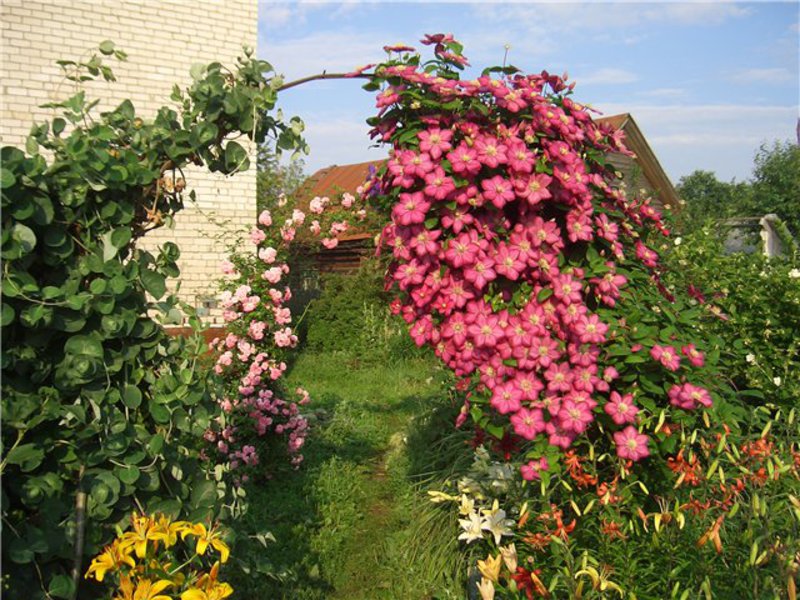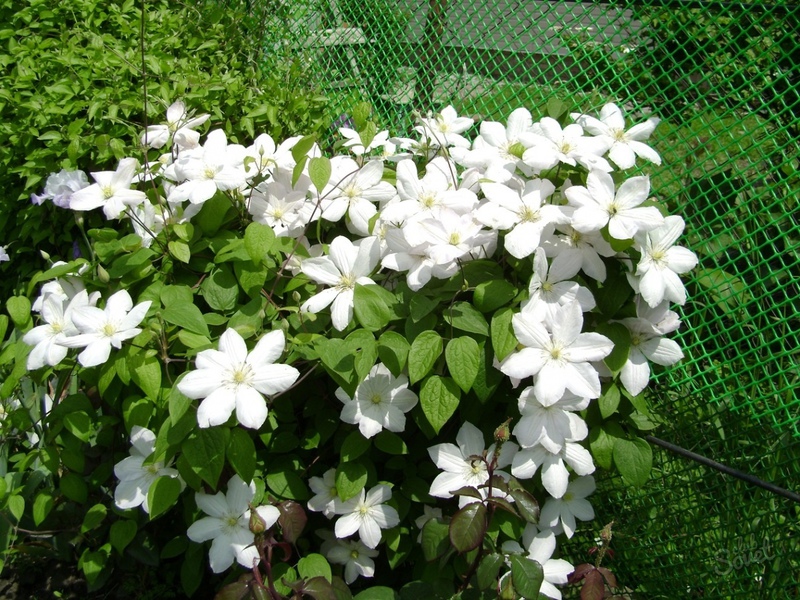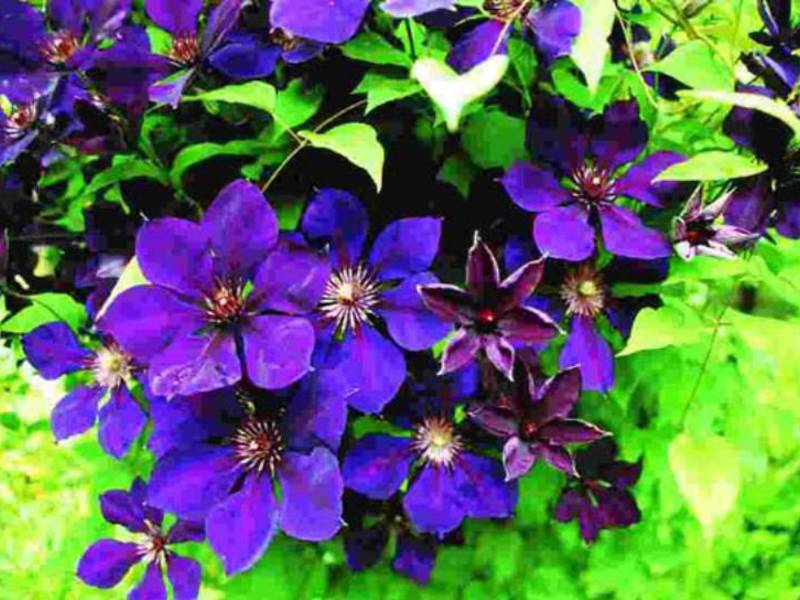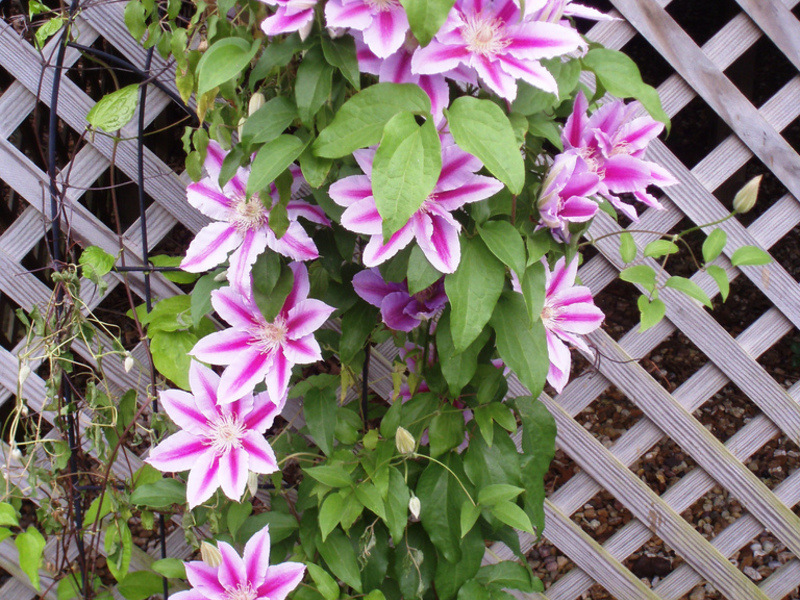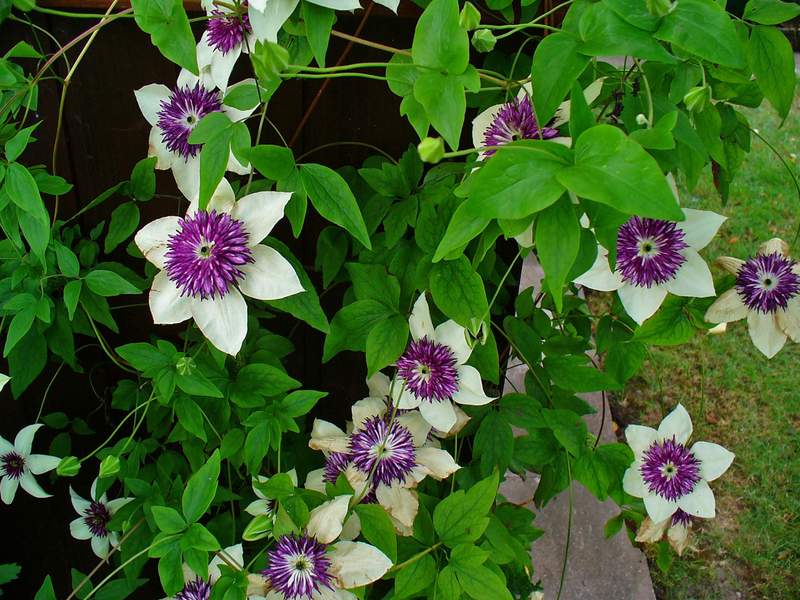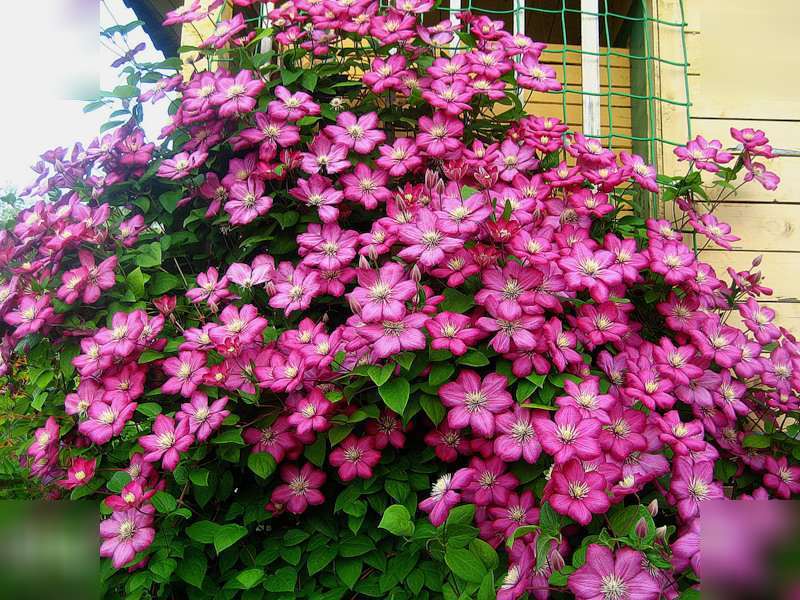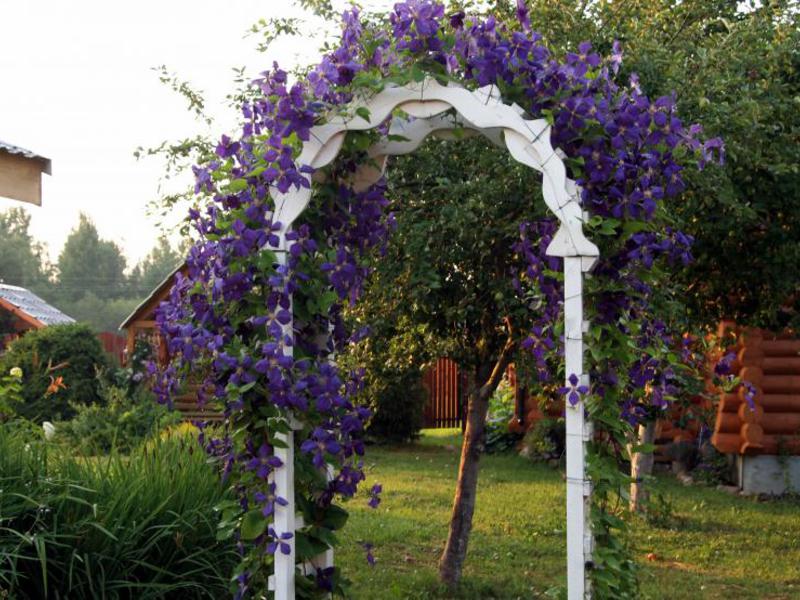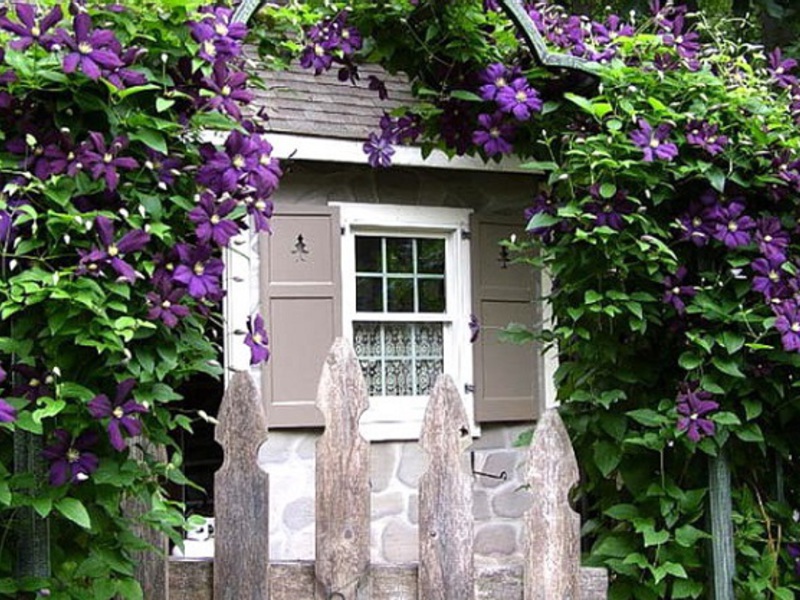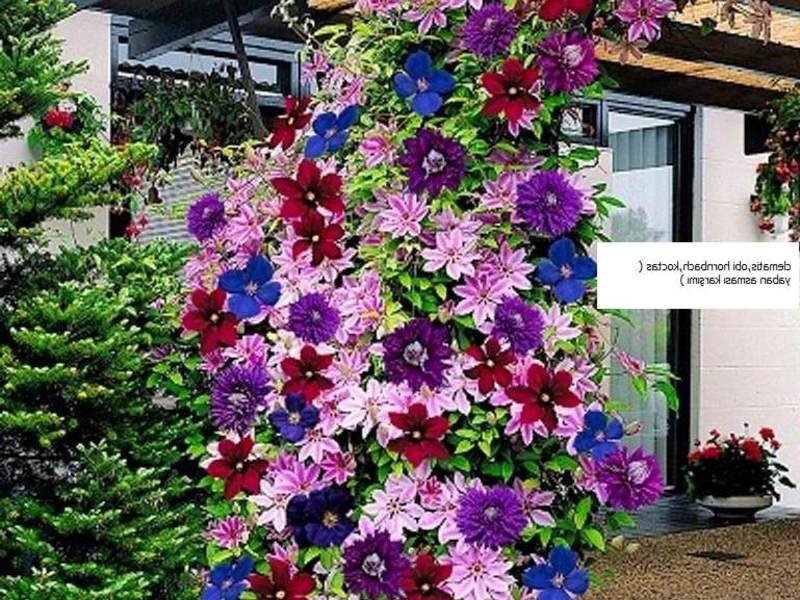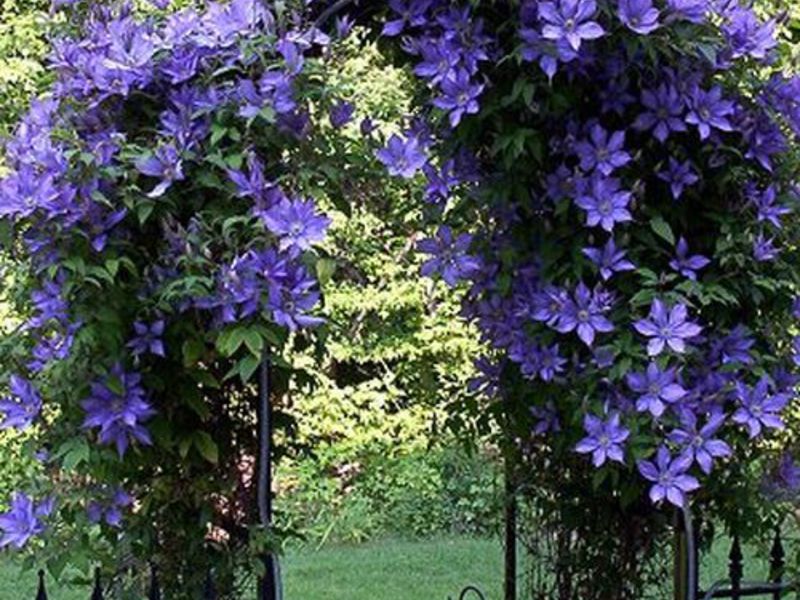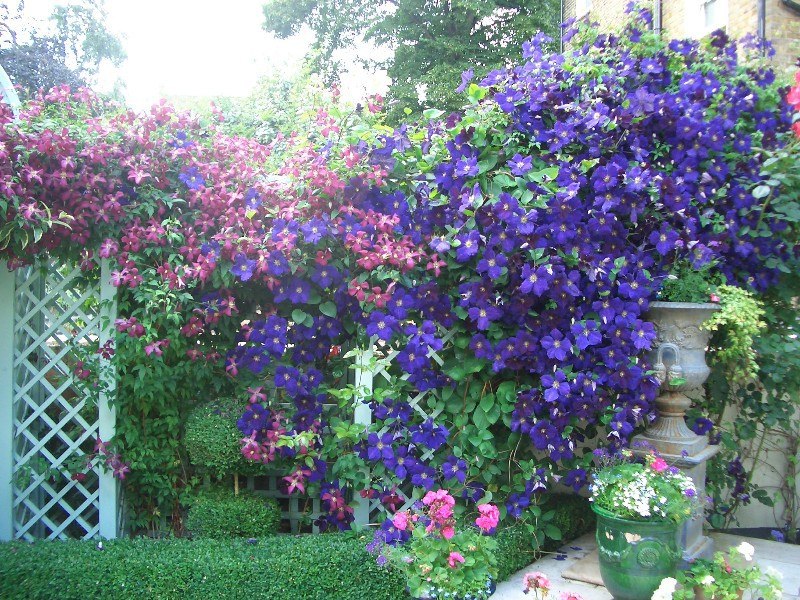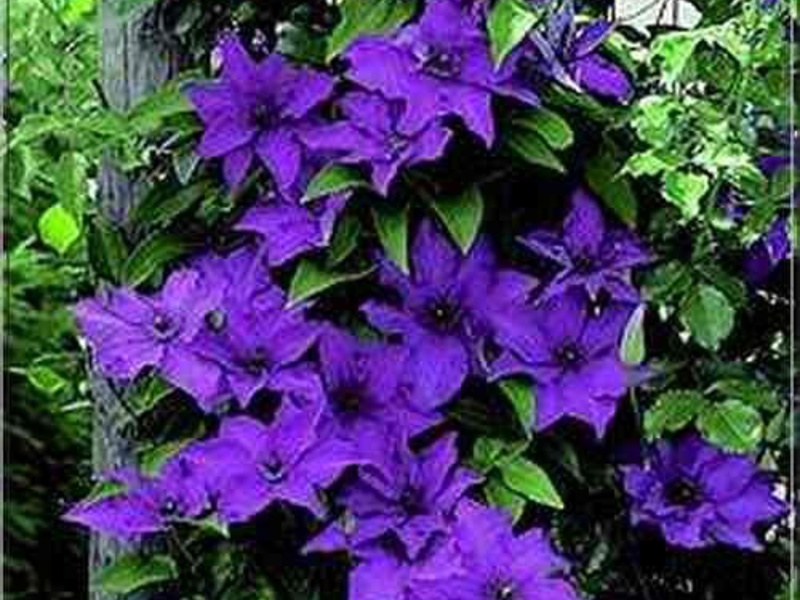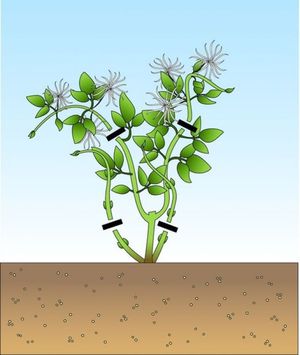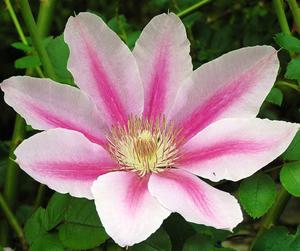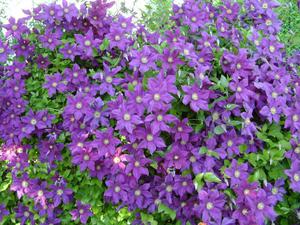 Clematis is a rather expressive plant, because not only its flowers, but also green vines have decorative properties. This feature explains why they are widely used by specialists in the field of landscape design, who create various figured structures with their help.
Clematis is a rather expressive plant, because not only its flowers, but also green vines have decorative properties. This feature explains why they are widely used by specialists in the field of landscape design, who create various figured structures with their help.
Homeland of clematis - subtropical and temperate climatic zone... However, this does not prevent them from growing them in Siberia. True, there are certain nuances, taking into account which allows you to ensure the abundant flowering of these plants.
Content
Varieties of clematis for Siberia
Blooming liana is one of the brightest garden decorations. Although the choice is quite large, clematis is most often used for this purpose. This plant was in demand in landscape design due to the long flowering of the bushes, the rich palette of colors, as well as the grace of the shoots to which the plants owe their beauty. Therefore, it is not surprising that in recent years, more and more amateur flower growers from different regions prefer clematis.
Considering that in Siberia the duration of summer is small, it is necessary to choose the right plant varieties. Therefore, at first it does not hurt to get acquainted with the existing types of clematis. One of the common classifications provides division of clematis into typesbased on the cropping method.
This plant itself is a member of the buttercup family. Its name comes from the Greek word "klema", which can be translated as "curly flower". In our country, several names for clematis are known: clematis, willow, warthog.
For those who have never seen clematis before this moment, it will be useful to see the photo, because they clearly demonstrate how diverse this plant can be. Among them there are liana-like with a climbing stem, shrubs and half-shrubs.
A feature of clematis is the original flowers, which provide a variety of shades of petals.
Depending on the type of trim several groups of plants can be distinguished:
 First type. It is formed by plants that are not pruned. New flowers are formed on last year's shoots. Given the difficult Siberian conditions, shoots do not always tolerate winter well. For this reason, varietal clematis of the first type should not be used for cultivation in these latitudes;
First type. It is formed by plants that are not pruned. New flowers are formed on last year's shoots. Given the difficult Siberian conditions, shoots do not always tolerate winter well. For this reason, varietal clematis of the first type should not be used for cultivation in these latitudes;- Second type. It includes varieties for which the pruning of faded shoots is carried out after the first wave of flowering has passed. Preparation for winter involves special pruning, as a result of which a quarter of the stem length is removed from the vines. Clematis of this type are suitable for cultivation in Siberia, often after a successful winter, the plants enter their first flowering, which usually occurs in May;
- Third type. Cultivars with dying off herbaceous shoots, for which complete pruning is carried out after the end of the growing season.Such varieties can be cultivated in Siberian climates, but they need good shelter for the winter.
Planting clematis - how to do it right
Planning in Siberia planting clematis is recommended in spring... In this case, they will have enough time to acquire a well-developed root system and endure the winter.
You need to be especially careful with regard to clematis seedlings purchased in nurseries, since a number of important nuances must be taken into account here:
- it is recommended to place clematis varieties in areas with maximum illumination, protected from the wind;
- even before planting, it is necessary to dig holes, which should have dimensions of 0.6 x 0.6 m. Fresh nutrient soil must be poured into them. Moreover, the composition of the mixture used should not contain peat and organic fertilizers.
- you need to be especially careful if the groundwater is close to the surface. In this case, you will have to arrange drainage for the plants;
- clematis will not be able to develop normally in wet, heavy soil, which is too saline and acidic. The first step is to fill the bottom with drainage, for which you can use quartz sand, perlite, vermiculite. During the preparation of the pit for planting, the excavated soil is used to create a fertile mixture. To do this, you need to add humus, lime and dolomite flour to it;
- it is recommended to include granular superphosphate in the composition of the land mixture, so that the flowering of vines will continue until the first frost. It is recommended to prepare the soil and the planting pit in the fall. This time will be enough for the lime to be neutralized.
When the planting site is ready, you can plant the plants. When removing clematis from the container, you need to be as careful as possible. Necessarily needed assess the condition of the roots and remove rotten ones, if any. After the plant is immersed in the hole, its roots must be positioned so that they have a natural position. Clematis shoots are very tender, so it will need support so that the seedling does not have problems in windy weather. After that, the soil mixture is poured into the pit to the very top, and then the soil must be compacted.
Plants should be avoided very close to building walls. It is optimal when they are spaced with some indentation from them:
- from walls or fences - 25 cm;
- from wall to support - 30 cm.
It has an extremely negative effect on clematis excess moisture... Therefore, so that the plant does not die quickly, it is necessary to choose a place for planting where there is no accumulation of water.
Therefore, clematis seedlings must be planted as far as possible from the roof drainage system.
Clematis care
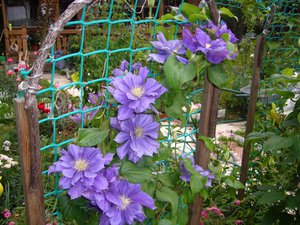 If clematis is properly cared for, they will delight the gardener with beautiful flowers. Naturally, every flower lover expects clematis to grow large, bright flowers. If you do not want this plant to bloom very quickly, then you need to provide proper plant care... It is necessary to take into account certain points regarding the proper care of them.
If clematis is properly cared for, they will delight the gardener with beautiful flowers. Naturally, every flower lover expects clematis to grow large, bright flowers. If you do not want this plant to bloom very quickly, then you need to provide proper plant care... It is necessary to take into account certain points regarding the proper care of them.
In summer, when a large green mass is formed in clematis, it needs to be regularly watered. To keep moisture in the soil as long as possible, it is recommended to mulch the topsoil. A good solution seems to be placing clematis near ground cover plants... Then they will provide shade in the heat, allowing the root system to consume less moisture. As for the clematis themselves, plants can be planted next to them that can feel normal in conditions of slight shading.
Particular attention should be paid to weeds that inhibit varietal clematis. In the summer you need to regularly weed beds with plants, making sure that not a single weed remains on them. After such an operation, all weeds as well as plant residues must be disposed of in a suitable way, for example by burning.
Clematis - Fertilizer Lover
When clematis enters the flowering phase, it expends a large amount of energy, therefore, to replenish nutrients, it is necessary to regularly feed. For clematis, this is very important, since, as practice shows, they need a lot of fertilizers per season.
Fertilizers
 To reduce the acidic reaction of the soil, it is necessary even in the spring during planting add dolomite flour, chalk or lime to the soil.
To reduce the acidic reaction of the soil, it is necessary even in the spring during planting add dolomite flour, chalk or lime to the soil.
A green herb infusion is a good approval. Alternatively, universal fertilizers and sustained release formulations can be used. Of the preparations frequently used by flower growers, good results can be achieved with the help of Kemira fertilizer. You can also use the preparation for feeding clematis "Pocon", but it should be borne in mind that it costs much more.
During the feeding of clematis, it is necessary to take into account that they especially need such trace elements as boron, molybdenum and cobalt... Their deficiency is compensated by the introduction of root or foliar dressings.
Reproduction of clematis
Most often, flower growers use the stem layering method to obtain new plants. To do this, it is necessary to prepare several grooves next to the mother liquor, where the stem shoots are subsequently laid and sprinkled with earth. Soon enough, internodes will form new growths that will appear on the surface. The advantage of this method of propagation is that the shoot is provided with the necessary nutrients that it receives from the mother plant. Using this method, you can acquire several dozen new clematis seedlings over the summer.
Reproduction methods by shoots and rhizome division
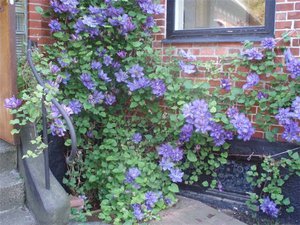 You can also use method of propagation by green layers... However, it will require a greenhouse or greenhouse. To do this, you must first prepare shoots from growing bushes and plant them in a cutter box. Particular attention must be paid to the potting mix that will fill the container. It is made from sand, fertile soil, perlite and vermiculite. After rooting and the formation of the root system, you can plan a transplant to a permanent place in the spring.
You can also use method of propagation by green layers... However, it will require a greenhouse or greenhouse. To do this, you must first prepare shoots from growing bushes and plant them in a cutter box. Particular attention must be paid to the potting mix that will fill the container. It is made from sand, fertile soil, perlite and vermiculite. After rooting and the formation of the root system, you can plan a transplant to a permanent place in the spring.
You can also get new seedlings by dividing an adult bush. But this method has a serious drawback: dividing an adult bush seriously injures the root system. Ultimately, a limited number of seedlings can be obtained from an adult plant. Therefore, this method of reproduction is rarely used.
Methods for treating diseased clematis
Clematis are not resistant to many diseases, one of which is wilt. With the development of this disease there are rapid changes in a state of clematis: the leaves begin to curl, turn black, and subsequently begin to fall off. The causative agent of this disease is pathogenic fungi. In order to prevent infection with the virus, it is recommended to spray in the spring with Bordeaux liquid, and after it with foundation. To minimize the risk of contracting this disease for the next season, it is recommended to repeat the treatment in the fall at the time the plants are sheltering.
Clematis can also be seriously affected by nematodes, spider mites and beet aphids. To combat ticks and aphids, it is recommended to use systemic preparations, which must be sprayed with plants at the first signs of the development of the disease.
The greatest threat to clematis is root or root nematode... Such plants cannot be cured. Therefore, they are dealt with in the following way: they are dug up and destroyed by burning.Moreover, subsequently, the place where clematis grew, affected by the root nematode, is not used for planting new bushes.
Conclusion
 Although Siberia is considered one of the harsh regions of our country, however, here you can grow delicate plants such as clematis. But in order to be able to enjoy the flowering of these plants in Siberia, the first step is to choose a suitable variety. After all, today breeders are constantly working on breeding hybrids capable of endure severe frosts.
Although Siberia is considered one of the harsh regions of our country, however, here you can grow delicate plants such as clematis. But in order to be able to enjoy the flowering of these plants in Siberia, the first step is to choose a suitable variety. After all, today breeders are constantly working on breeding hybrids capable of endure severe frosts.
If you managed to get a suitable variety of planting material, then you need to plant it in a permanent place in the ground as soon as possible. After all, everyone knows that Siberia has a short summer, so it is important that clematis has enough time so that it can form a well-developed root system. Then the severe Siberian frosts will not be terrible for him, and next spring he will again delight the grower with his bright inflorescences. However, you can count on this only on condition that during the summer you will regularly water and feed.
